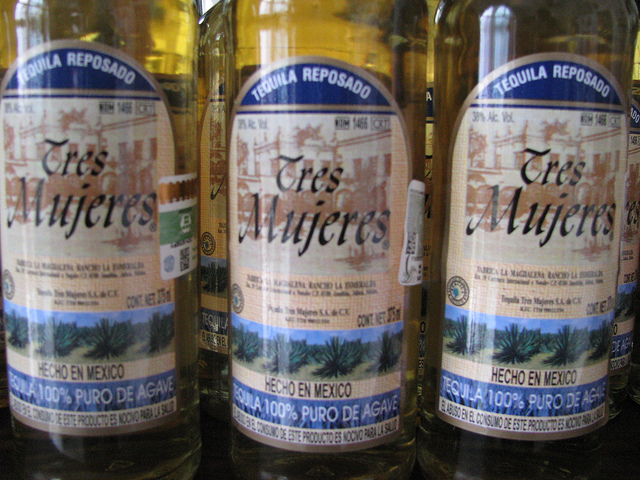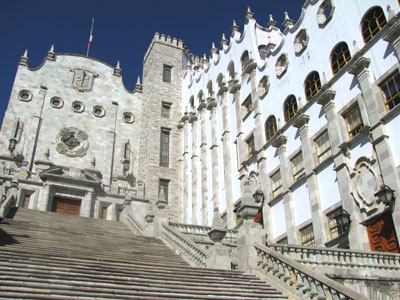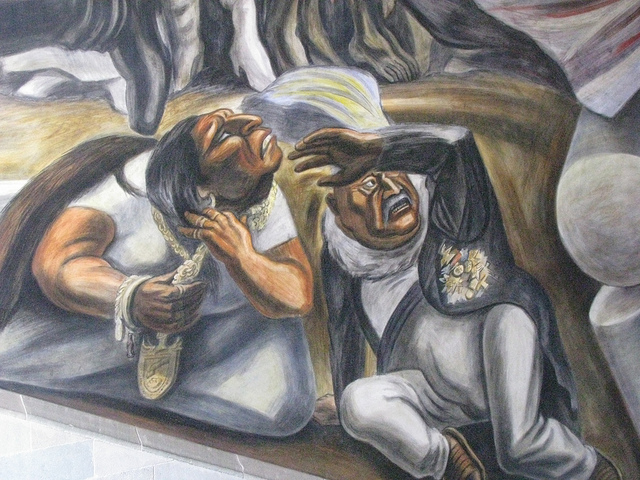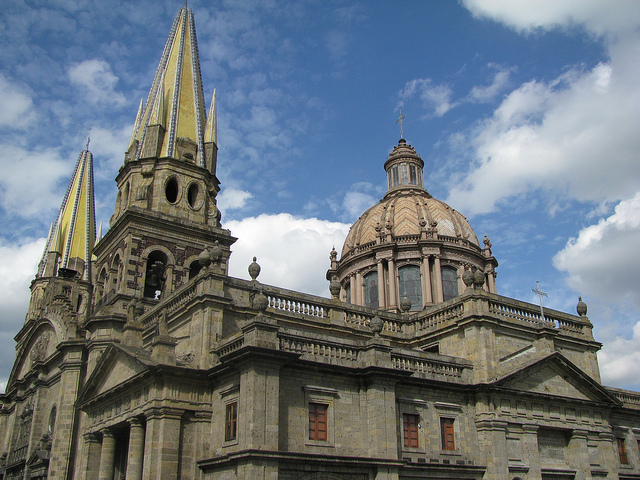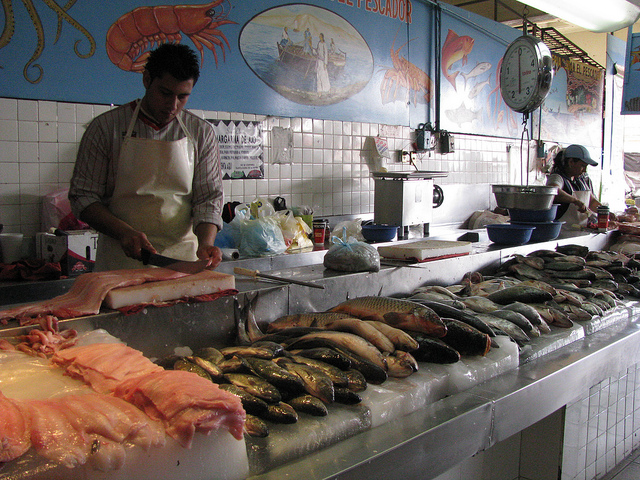After a nice tour through the Municipal Market in Tlaquepaque and a Spanish lesson, I was going to head out of town this afternoon. Local expert and professional tour guide José Orozco picked me up at the Guadalajara Language Centre punctually at noon time for a tour of the Tequila region. This is the birthplace of Mexico’s legendary drink and the area surrounding the town of Tequila has been designated a UNESCO World Heritage Site. Tequila itself has been designated a “Pueblo Mágico”, a magical town, by the Mexican federal government, for its unique history and charm.

José Orozco, my knowledgeable local guide
I jointed two other people in José’s van: he had arrived with a couple in their 50s from North Carolina who were looking to retire in the Guadalajara region. Tomorrow they had set up an appointment with a real estate agent to have a look at some houses in the Lake Chapala region.
A tour through the Tequila area is a popular introduction for any expatriates interested in relocating to this region. As we started driving on the busy highways of Guadalajara, José explained that Tequila is a protected designation that can only be applied if the spirit was produced from the Tequilana Weber Blue variety of the agave, in one of the designated regions of production in Jalisco and Tamaulipas. If the drink is produced outside these areas it has to be referred to as “vino mexcal”.

Real tequila: the “Las Tres Mujeres” brand
As the clouds overhead were getting darker and darker, we made our first stop in the village of El Arenal. This small town is home to at least 25 different tequila distilleries. We were going to visit the Las Tres Mujeres Tequila Distillery where we would have a chance to see the entire tequila making process. First we surveyed the huge fields of blue agave plants surrounding the distillery. Then we had a look at the ovens where the agave hearts are boiled after the leaves are cut off. At this stage the agave plant looks like a large pineapple.

The agave plant gets milled to extract the juice
Next was the milling area where the boiled agave hearts are ground up to get the juice out. We got to taste a piece of boiled agave plant, and the juice of the plant is extremely sweet. Actually you don’t eat the plant; similar to sugar cane you only suck on it. I really enjoyed the sweet taste of the freshly boiled agave plant.
As a next stage, the juice is fermented in big metal containers where it stays for 36 to 40 hours. Then the fermented juice goes to the distillation area where it is distilled twice. José explained that there are different kinds of tequila: white tequila (tequila blanco) is unaged and bottled immediately after distillation. Rested tequila (tequila reposado) is aged for between two and twelve months inside oak barrels. Añejo tequila (aged or vintage tequila) is aged between one and three years, and Extra Añejo (extra aged tequila) undergoes at least three years of aging in oak barrels.

Distilling area at Las Tres Mujeres
Next to the distilling area is a room full of different bottles that are used for bottling the tequila that is produced at this distillery. Big plastic bottles were on display which are popular among the locals because of their lower unit price. José added that Las Tres Mujeres produces about 2000 litres of tequila a day and much of the product is destined for export. The distillery had a nice tasting table set up so everyone could taste the four different types of tequila. I am no big fan of alcoholic beverages, instead I tasted a little more of the boiled agave plant that was also displayed on the tasting table. Steps away is the gift shop where visitors can buy different brands of tequila, souvenir t-shirts and all sorts of small gifts.

Painting in the gift shop at Las Tres Mujeres
We got back on the road and through rolling hills we made our way to the town of Tequila. After parking our van on the outskirts we started walking towards the centre of this atmospheric place. We went inside the parish curch, Our Lady of the Purísima Concepción, which was surrounded by the zócalo (main square) on the north side. Then we strolled slowly towards one of the largest tequila distilleries by the name of José Cuervo. The word “cuervo” is actually Spanish for “crow” and sure enough, the entrance area to the José Cuervo distillery is highlighted by a giant sculpture of a black crow.

The big crow statue at the José Cuervo factory
The company has a huge complex in the heart of Tequila which was built in typical colonial construction. Several courtyards host the visitors and a large gift shop entertains and educates the crowds. Across the street is a private museum that is housed in the original José Cuervo factory. All sorts of original equipment is on display and illustrates the tequila-making process of former times. A big grindstone was turned by mules to crush the agave plant. Old barrels, carriages and distilling equipment show how laborious it used to be to produce tequila.

José Cuervo tequila can be purchased inside the gift shop
